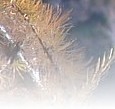|
A SLD light source with Gaussian shape
is chosen with DlFWHM = 40 nm and centered at lc = 1318 nm. The SLD
intensity I(n) is

|
(D-15) |
The relations between nc, b, Dl and lc are

|
(D-16) |

|
(D-17) |

|
(D-18) |
where c0 is the light speed in
vacuum (2.9979×108 m/s).
The discrete intensity between 1210 and 1410 nm with 5000 points is
presented in Fig. D-1.

Fig. D-1 : Gaussian light source intensity in linear (left) and dB scale
(right)
The Fourier transform of the light
spectrum, which is the impulse response h(t) of the light source and the pulse width DtFWHM are given by

|
(D-19) |

|
(D-20) |
The pulse width DtFWHM is found to be 38.3mm/c0. The calculated impulse response amplitude is
presented in Fig. D-2. The impulse axis is the optical path difference
between -120 and 120 mm
corresponding to the travel distance in vacuum for the corresponding impulse
time.

Fig. D-2 : Impulse response amplitude of the Gaussian light source intensity
in linear scale (left) and in dB scale (right)
The impulse response outside the ±95 mm is no more the expected
Gaussian function due to roundings in the calculation process.
|





